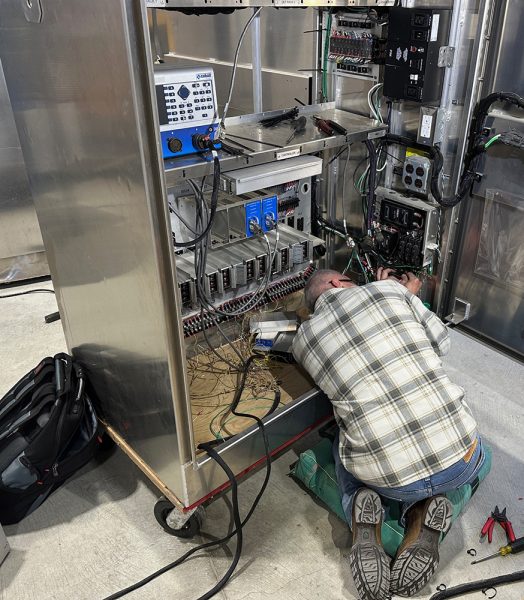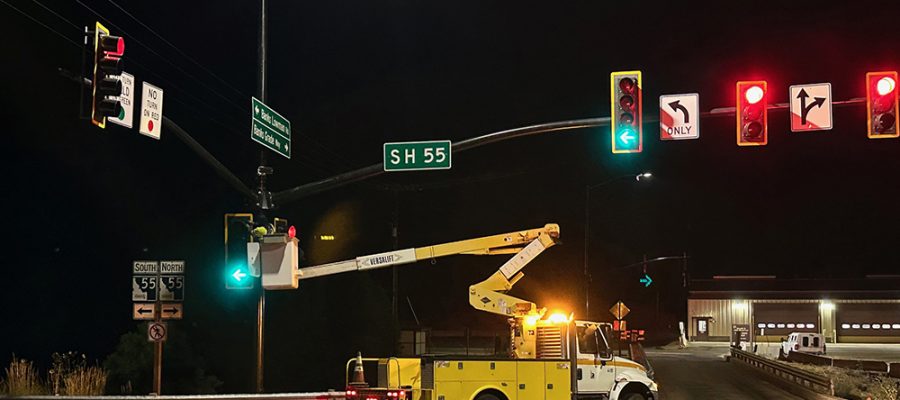When traffic starts backing up at the Banks-Lowman and SH-55 intersection in SW Idaho, especially during the busy summer months, locals feel it and so do ITD crews. For years, temporary flagging operations helped keep things moving, but concerns continued to build around congestion, public safety, and the risks faced by flaggers working in live traffic.
So, District 3 Operations took action. Without dedicated funding but with a deep understanding of the need, the department made a bold decision: build and install a traffic signal in-house.
It was the first time ITD crews had taken on a signal project from start to finish, including design, construction, and installation, and they pulled it off in just 15 months. A similar project delivered through the traditional method would have taken 3-5 years and cost around $1.5 million. By handling it internally, ITD completed the work for under $500,000.
“The crews’ efforts, communication, and coordination were exceptional,” Nestor Fernandez, District 3 Operations Engineer, said. “Each team, whether from our own district or assisting districts, was fully committed and invested in completing their tasks. The seamless collaboration across groups ensured work was completed efficiently and to a high standard.”
That creativity was especially important when it came to phasing the new signal. The intersection didn’t have existing turn lanes, and a single-lane bridge had to be managed without introducing excessive delay. Because the design was handled in-house, the team could think outside the box and the result was a tailored solution that worked.
While some highly specialized elements, like foundation drilling and pole installation, were contracted out, the majority of the project was delivered using state forces. ITD teams from across the agency contributed, and that statewide collaboration proved to be a game-changer.
From navigating environmental requirements to expediting material procurement, every step of the process came with a learning curve. But the result wasn’t just a safer intersection, it was a powerful example of what’s possible when teams work together and think creatively.
“Constructing this project with state forces was a unique and valuable experience for the district,” Nestor added. “The positive, seamless collaboration and communication across all sections, and with the contractors, was a key factor in its success, as was the strong ownership each team took in their role.”
The Banks-Lowman signal project has already made a difference for local residents and travelers alike.

